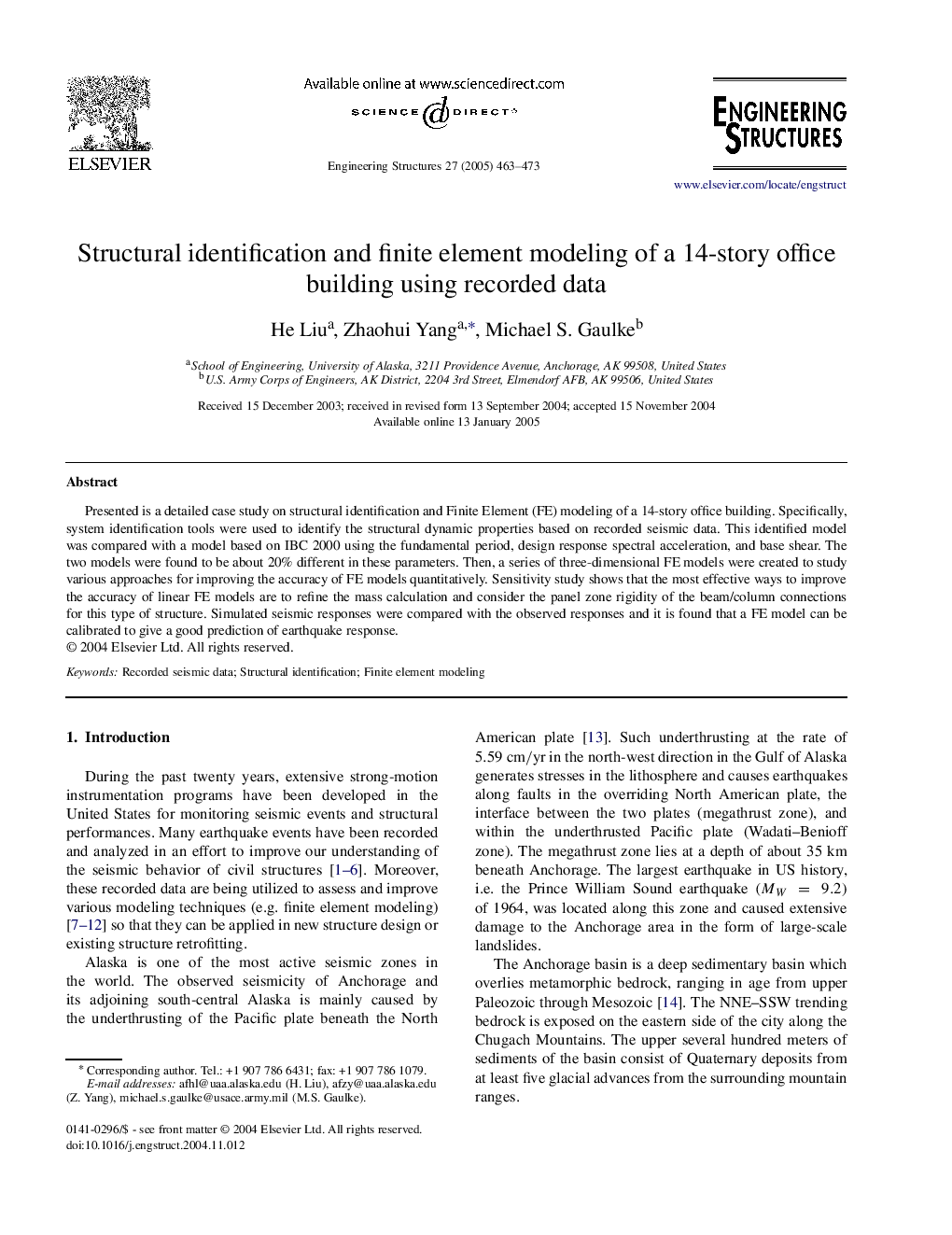| Article ID | Journal | Published Year | Pages | File Type |
|---|---|---|---|---|
| 10287325 | Engineering Structures | 2005 | 11 Pages |
Abstract
Presented is a detailed case study on structural identification and Finite Element (FE) modeling of a 14-story office building. Specifically, system identification tools were used to identify the structural dynamic properties based on recorded seismic data. This identified model was compared with a model based on IBC 2000 using the fundamental period, design response spectral acceleration, and base shear. The two models were found to be about 20% different in these parameters. Then, a series of three-dimensional FE models were created to study various approaches for improving the accuracy of FE models quantitatively. Sensitivity study shows that the most effective ways to improve the accuracy of linear FE models are to refine the mass calculation and consider the panel zone rigidity of the beam/column connections for this type of structure. Simulated seismic responses were compared with the observed responses and it is found that a FE model can be calibrated to give a good prediction of earthquake response.
Related Topics
Physical Sciences and Engineering
Earth and Planetary Sciences
Geotechnical Engineering and Engineering Geology
Authors
He Liu, Zhaohui Yang, Michael S. Gaulke,
